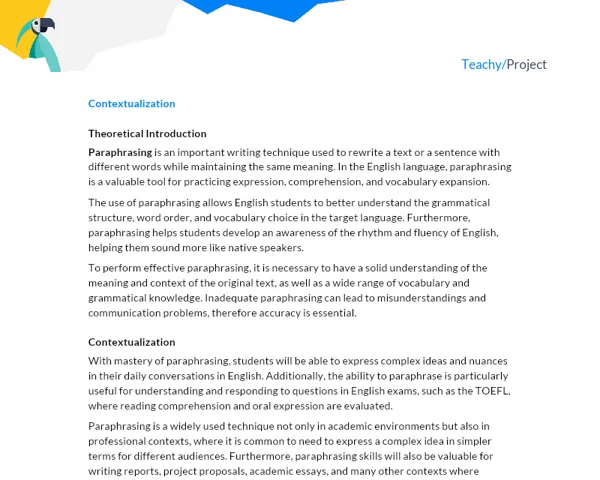Contextualization
Advertising. This is a word we are all familiar with. It is present in so many aspects of our daily lives; the commercials on TV, the ads in newspapers and magazines, the social media posts, the billboards on the street. Advertising is a powerful tool used by companies and organizations to share messages, persuade people and promote products, services, or ideas.
But advertising is more than just promotional messages. It is a complex form of communication that uses a variety of elements to capture the audience’s attention and persuade them. In other words, it is a form of argumentation. To be able to analyze and understand these messages, it is essential to be familiar with the elements of advertising and argumentation.
The persuasive elements in advertising can range from word choice and figures of speech, use of colors and images, to the size of the fonts. Identifying these elements is not only useful to better understand advertising, but also an important skill to critically evaluate the information we receive.
Introduction
We live in the information age. With the advent of the internet and social media, we are constantly bombarded with messages, ideas, and arguments. Now, more than ever, it is important to be able to discern facts from opinions, identify main arguments, and the evidence that supports them.
Advertising and argumentation are key concepts in understanding and navigating this sea of information. They are powerful tools which, when well understood, can help us interpret and critically evaluate the information we receive.
This project is about understanding the elements of advertising and argumentation. Students will learn how to identify the persuasive elements in advertising texts and how to distinguish facts from opinions in argumentative texts. This will be done through hands-on and interactive activities that will be not only educational, but also fun.
Hands-on Activity
Activity Title: Advertising Campaign — "The Power of Persuasion"
Project Goal
To create an advertising campaign for a fictitious product, applying the concepts of advertising and argumentation learned. You will work in groups of 3 to 5 students and will have one week to complete the project.
Detailed Project Description
In your campaign, you will demonstrate your understanding of the elements of argumentation and persuasion used in advertising, such as identifying main arguments and the evidence used to support those arguments, and making conscious and deliberate choices of words, colors, and images, with the purpose of influencing your target audience.
Required Materials
- Computer with internet access
- Graphic design software (for example, Canva, Adobe Spark, etc.)
- Research materials: Recommended books, articles, videos, and websites.
Activity Steps
-
Form Groups: Form groups of 3 to 5 students.
-
Research and Study: Use the recommended research materials to better understand the concepts of advertising, argumentation, and persuasion. You should familiarize yourselves with elements such as word choice, use of colors, images, fonts, etc.
-
Campaign Planning: Define the fictitious product that the campaign is going to be for and identify your target audience. Decide on the main arguments that you will be making and the evidence or examples that will support those arguments.
-
Campaign Creation: Create your advertising campaign using a graphic design software. Your campaign should contain visuals and text. In your text, use verbal resources to build your argument and persuade.
-
Presentation: Prepare a presentation explaining your campaign. You should explain the choices you made (colors, images, words) and how they were used to argue and persuade your target audience.
Project Deliverables
At the end of the project, each group must deliver:
-
Advertising Campaign: A digital image of the advertising campaign you created.
-
Presentation: A presentation explaining the choices you made in your campaign and how they were used to argue and persuade.
-
Report: A written report on the project that includes:
-
Introduction: Give some context on the topic, the importance of advertising and argumentation, and the goals of this project.
-
Development: Explain the theory behind the elements of advertising and argumentation. Describe the activity in detail, explaining how you created your campaign, what methodology you used, and present the results you obtained.
-
Conclusion: Summarize the main points, explaining what you learned and the importance of advertising and argumentation.
-
Bibliography: List the sources you used for your project, such as books, web pages, videos, etc.
-
Remember, the goal of this project is for you to learn about the elements of advertising and argumentation, and to be able to identify and use these elements effectively. Good luck!

